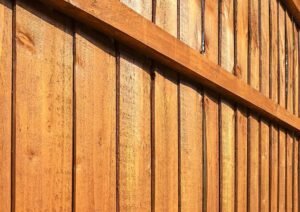Will a Fence Installation Increase the Value of My Home?
We construct and erect fences for many different reasons, and so value for money will depend largely on your needs. This will, in turn, depend on function, style, and the effect you want your fence installation to have. It will also depend on the materials you use for fencing as well as its height and extent.
For example, a good looking waist-high wooden picket fence built around the full extent of your property will probably cost a lot more than an ordinary chain link fence, but constructed to enhance your landscaping scheme, it will add value to your house. If you need the fence for security reasons, you might get better value from the chain link option. If you need a screen to help shield the noise of cars traveling on a nearby highway, a solid wood fence will likely be a better choice, but you will only need it where it creates an effective sound barrier.
Why We Fence Our Properties

Once you have decided why you want fencing, you can decide what type of fencing will best meet your needs within your available budget.
- Fencing for security. The earliest walls and fences were constructed for protection of crops, livestock, and of course people. Today the most popular forms of security fencing include aluminum, wrought iron, steel, and chain link, the latter being the least expensive option. Solid wooden fences are also effective for security purposes, provided they are tall and sturdy enough to prevent anyone climbing or looking over them. If you want to cut costs, a viable option is to have a high chain link fence installed, and then to plant a live fence on the inside, with feature trees and large shrubs. A live fence, or even a cultivated hedge, is not a very good security option.
- Fencing for protection. While security and protection do go hand-in-hand, when fencing is planned specifically for protection it is usually to keep children and/or animals safe. Security fencing can often do the same job, but when fencing for protection, it doesn’t necessarily need to be as high as effective security fencing needs to be. Swimming pool fencing is one example: it should be at least 6 ft (1.8 m) high, and made in such a way that a child cannot climb it. Pool fencing and other protective fencing should have slats or vertical bars that are no wider than 4 in (100 mm) and all gates should be self-closing. If fencing is intended to contain animals, it’s important that they won’t be able to dig under it.
- Fencing and screening for privacy. Outdoor entertainment areas will often benefit from the addition of a fence or screen that provides privacy. This type of fence would need to be reasonably solid to block the required line of sight, but need not contain the area as a whole. Screening for privacy might also be advantageous in some housing estates and gated communities with smaller lots, which, even if walled or fenced, might enable neighbors to peer into your yard. Wood and vinyl are both effective materials for privacy fencing.
- Screening the elements. Well designed, a fence will help temper wind, sun and even noise from neighbors or nearby highways. This type of fencing can be a challenge as wind and sun in particular will affect the property differently, according to the seasons. It is always best to spend time outdoors to see what the effect of wind and sun are, particularly in spring and summer when you are likely to want to spend time out of the house. Generally solid screens will help wind, though fencing with spaced boards can also be effective. Sun control can be achieved with more open fence designs including latticework, as well as pergolas and overhead screening.
- Fencing as a landscaping tool. Fencing is a versatile landscaping tool that can be used very effectively with plants. For instance it can help to establish a garden style and can also be used to introduce both color and texture into the landscaping scheme. In fact walls, fences and screens may be used very successfully to form the basic framework of any garden or backyard. In addition to screening the elements and creating privacy, they may also be used to block unsightly views.
Weigh up Cost and Value of Fencing
Having established your fencing needs, you can look at suitable options for each one. If you are on a tight budget, the most inexpensive option is chain link. It works for security and protection, and can be used together with imaginative planting as a landscaping tool. Just be aware that if you live in a housing estate, the homeowners association may not permit its use.
Vinyl is regarded as a high-end fencing option, but it requires minimal maintenance (if any at all) and will not have to be resealed, varnished or painted every year or two. If your budget allows for vinyl fencing, you may find that it offers the best value for money.
Wood is a mid-range option and undoubtedly the most popular generically. There is so much that can be done with wooden fencing, it can be adapted for all needs and landscaping styles. Wooden fences are also environmentally friendly and will fit into any neighborhood.
Wrought iron, steel and aluminum fences tend to be more expensive than wood, but they are ideal for security.
So weigh up your needs carefully, look at your options and costs, then decide what offers the best value for your fence installation.

